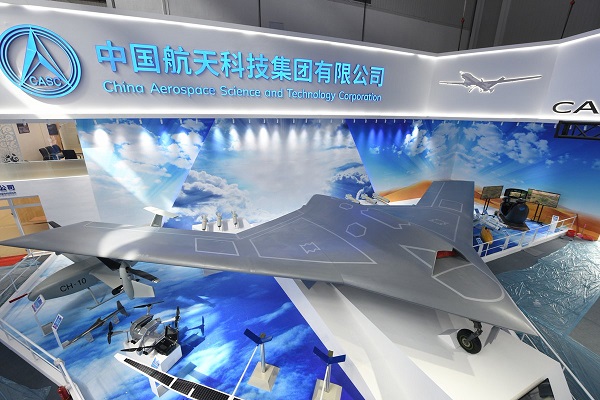China unveils new stealth combat drone
November 9, 2018 | Expert Insights

A Chinese state-owned company says it is developing a stealth combat drone - the latest sign of the country’s growing aerospace prowess.
The CH-7 unmanned aerial vehicle also underscores China’s growing competitiveness in the expanding global market for drones.
Background
An unmanned combat aerial vehicle (UCAV), also known as a combat drone or simply a drone, is an unmanned aerial vehicle (UAV) that usually carries aircraft ordnance such as missiles and is used for drone strikes. Aircraft of this type have no onboard human pilot. These drones are usually under real-time human control, with varying levels of autonomy.
Equipment necessary for a human pilot (such as the cockpit, armour, ejection seat, flight controls, and environmental controls for pressure and oxygen) is not needed, as the operator runs the vehicle from a remote terminal, resulting in a lower weight and a smaller size than a manned aircraft.
While several nations possess and manufacture unarmed UAV, only the United States, Israel, China, Iran, Italy, India, Pakistan, Russia and Turkey are at present known to have manufactured operational UCAV.
Analysis
China is developing a stealth combat drone which can be seen as the latest sign of the country’s growing aerospace capabilities. The CH-7 unmanned aerial vehicle is proof of China’s growing competitiveness in the expanding global market for drones. China has won sales in the Middle East and elsewhere by offering drones at lower prices and without the political conditions attached by the U.S. The CH-7’s chief designer, Shi Wen, says the aircraft can “fly long hours, scout and strike the target when necessary”.
Shi said manufacturer Chinese Aerospace Science and Technology Corporation plans to test fly the drone next year and begin mass production by 2022. He said the drone will likely be sold abroad but had no information on potential clients.
A model of the aircraft is being displayed at this week’s Zhuhai air show in southern China, a biannual event that showcases China’s latest advancements in military and civilian aviation. With a wingspan of 22 meters (72 feet) and a length of 10 meters (33 feet), the swept-wing CH-7 is the size of a combat aircraft and its single engine can propel it at roughly the speed of a commercial jet airliner.
The U.S., Russia and France are also developing stealth drones, while Israel has long been a leader in the UAV field. However, low prices and a willingness to transfer technology have endowed China with a strong position in the UAV market.
The U.S. has been extremely cautious about selling its higher-end unmanned system, even to NATO member states, opening up an opportunity to China in the export market, said Justin Bronk, an expert on such technologies at the Royal United Services Institute for Defense and Security Studies in London.
Alongside its development of stealth fighters and commercial passenger jets, China has advanced rapidly in the development of UAVs, which have a relatively lower technological entry cost. Sales have also been boosted by the fact that China is not a signatory to the Missile Technology Control Regime that restricts exports of missiles and other unmanned weapons systems.
While the CH-7’s ultimate effectiveness remains to be determined, if exported, it would mark another step-change for China, which has traditionally not offered its cutting-edge technology to foreign customers. While the U.S. still holds a technology advantage, China wins on price. The fact it is willing to sell the CH-7 abroad could indicate the technology is less than cutting edge, given China’s desire to guard its technological edge in such areas.
Counterpoint
Most of China’s domestically-built military hardware platforms have an underlying problem: none of them has seen active combat duty and their reliability under combat conditions is, therefore, questionable. Additionally, the limited data released by the Chinese government on these weapon platforms are insufficient to make a calculated prediction. As such, the allegation of data fabrication has also plagued Chinese built weapons.
Assessment
Our assessment is that China is starting to tap its rapidly growing technological capabilities to build advanced weapon platforms and arms. China’s growing assertiveness in the South China Sea is prompting the development of a fleet of new-age drones and ships with advanced surveillance capabilities. We believe that China is developing low-cost, high-quality drones to drive out competition from the US and Europe. We also feel that ongoing conflicts in the Middle East and North Africa may start to see a greater number of Chinese drones in action.








Comments